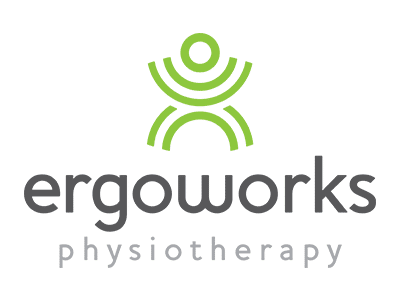Is Mobile Working an Ergo Fail?

Mobile working means mobile devices, and there is no doubt that working directly from these devices is a musculoskeletal injury risk factor. We see it everywhere as more people work remotely, at all times of the day, often from very ‘un-ergonomic’ postures.
What’s the problem?
The forward head posture adopted by laptop users is the most problematic issue from an ergonomic perspective. Increased neck pain has been positively associated with forward head posture, as demonstrated in this study published in the Journal of Physical Therapy Science.
Using a smaller device (such as a laptop or tablet) results in increased rounding of the upper back and neck, and creates a forward head posture to reduce the viewing distance to the screen. This article compared laptop use to desktop computer use, concluding that there were musculoskeletal risk factors associated with the smaller devices. This is further evidenced by a global posture study which identified a range of ‘new’ common postures when using mobile devices that included leaning forwards over our desks and flexing our neck downwards.
A study published in the Ergonomic journal found that the mechanical demand on the neck muscles was estimated to increase 3–5 times during seated tablet use when compared to seated neutral posture. The lower the tablet was positioned, the higher the load.
Another study of students aged between 20 and 30 found that 77.3% of laptop users reported at least one musculoskeletal complaint after using their laptop. Among these, neck trouble was the most prevalent (60%), followed by wrist (27%) and right shoulder trouble (26%). Nearly 45% of subjects adopted a kyphotic posture during laptop usage. The most common places where a laptop was placed were on the lap (29%) or an office desk (24%).
Who owns the risk?
What many employers don’t adequately realise is that mobile working becomes an extension of the office and the ergonomic risk can very easily lead back to the organisation. A company’s approach to mobile working needs to be very clearly documented and distributed to staff members. At a minimum it should include items for an ergonomic risk assessment, and typically should include a description of who is responsible for managing any identified risks and/or purchasing items if required.
What can we do about it?
At Ergoworks, we take a three-step approach to managing ergonomic risk for mobile workers.
Step 1: The Environment
We recommend using online assessments such as ErgoAssess to review a working environment and provide some guidance for managing any identified risks. For a diverse workforce spread geographically, online assessments are much more practical to implement than physical 1:1 assessments and can provide useful advice in a cost-effective way.
Step 2: The Setup
Whether it’s a home office, café, or hotel room there are simple equipment items available that can significantly improve a person’s working posture.
The huge consideration is the height of the screen. If you’re working directly from a laptop then you are placing additional postural strain on your neck and shoulders as you look down to view the screen. This study concluded that the impact on head and neck posture was directly impacted by the height of the device. If there is a monitor that you can connect to this will help with your posture, but where this is not practical the simple solution is a laptop pack.
A laptop pack consists of a compact, lightweight laptop stand bundled with a separate keyboard and mouse. Using these three items together raises the working height of your screen whilst maintaining appropriate positioning of your upper limbs. This study found a significant difference with the use of a laptop stand, resulting in less loading on the structures of the neck, less perceived strain, and higher productivity. Another study looked at the effect of notebook computer configuration on user biomechanics, productivity, and comfort. It also recommended the use of a laptop pack when using a notebook computer for extended periods of time.
The other main consideration is to choose the best sitting posture. Are there a variety of chair options available at the café? Is there a desk that you can set up from in the hotel? Have you thought about a dedicated space at home where you can sit comfortably to work in a more ergonomic position?
The ideal sitting posture is at a height that allows your feet to be comfortably grounded, your back to be supported by a backrest in a slightly reclined position, and your forearms supported by a work surface in a horizontal position. The more of these things that you can achieve the more comfortable you will be.
Step 3: Breaks
Mobile workers often don’t have the distractions during the work day that occur in an office environment, which means that someone working from home can easily find themselves in one posture for an extended period of time. In addition, some workers will feel the need to be constantly accessible when they’re working from home so that they’re not perceived to be ‘slacking off’ by working remotely.
Taking breaks regularly is essential for any working posture and is even more important when the posture is less ideal. In a regular office environment a person might work for 60 minutes before the postural load accumulates to an uncomfortable level, however if they’ve needed to make a compromise to posture when working remotely then this tolerance might decrease to just 15-30 minutes. This study found that longer durations using mobile devices was associated with more discomfort, and recommended changing posture (as well as use of a laptop pack) to reduce the risk. This article recommends that when using a tablet, people should change posture every 15 minutes to avoid neck strain.
At Ergoworks we recommend that for a company to manage the risks of mobile working completely, there needs to be a policy in place that identifies extended duration of work as a risk factor and encourages a worker to offset postural fatigue with movement, changes in work activity, micro-breaks for a few seconds at a time, and more formal breaks at appropriate intervals.
The bottom line
According to a large global workplace survey half of workers globally report that they regularly spend half the week or more outside one of their main office locations, and three out of four report that flexible working is now ‘the new normal’.
Taking care of ourselves when we use mobile devices needs to become as embedded in our health & safety culture as wearing a seatbelt in the car, or a helmet when riding a bike. This shift in our habits can easily be driven by the workplace and will hopefully filter down to future generations too.
On a positive note, this study found that ergonomic educational sessions that targeted laptop positioning (using laptop packs) coupled with information about eye and rest breaks was effectively taken on board and adopted by the end users.
Mobile working doesn’t need to be an ergo fail. Ergonomic education together with correct application of strategy and equipment leads to a much safer, happier workplace, with significant long term outcomes for employees and organisations as a whole. If there’s room for improvement in your organisation’s mobile working policy, or if you’re curious to learn how Ergoworks have assisted other organisations, our friendly team are always available. There is no better time to start implementing these strategies for staff and family members alike – good habits learned early are more likely to stick, and mobile devices are undoubtedly the mainstay of work both now and into the immediate future.


